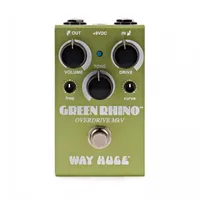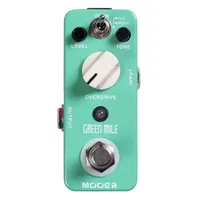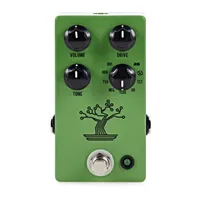MusicRadar Verdict
The Warm Audio Tube Squealer offers a range of extras that are useful enough to justify its entry into what is a saturated market. Featuring a Voltage Booster, Mix control, True/Buffered bypass selector and a switch to shape the tone for humbuckers or single coils, if these extras suit your set-up, you may have just found your perfect iteration of a classic circuit.
Pros
- +
Three accurate recreations of classic Tube Screamer circuits.
- +
Useful extras to shape the tone to suit your setup.
- +
Selectable buffered/true bypass.
- +
Reasonably priced.
- +
Solid build.
Cons
- -
Humbucker mode can be a bit spiky depending on how you use it.
- -
Mix control works oppositely to how you may expect.
- -
The LED could be brighter.
MusicRadar's got your back
Name: What is it?
You don’t have to look far before seeing an Ibanez Tube Screamer on a pedalboard. Whether it’s in a blues context, a la Stevie Ray Vaughan, or slamming the front of a distorted JCM 800 to tighten up a metal tone, it’s an essential overdrive pedal for any guitarist to at least try.
While this has led to a host of readily available copies, some take that tried-and-tested sound and do something interesting with it. Enter the Warm Audio Tube Squealer.
Warm Audio has form for building recreations of classic pedals with the Warm Drive (inspired by the Hermida Audio Zendrive) and Centavo (inspired by the iconic and frequently imitated Klon Centaur) pedals being two such examples. Usually, but not always, these pedals have a Warm Audio flavoured twist; the Mod switch on the Centavo being one prime example.
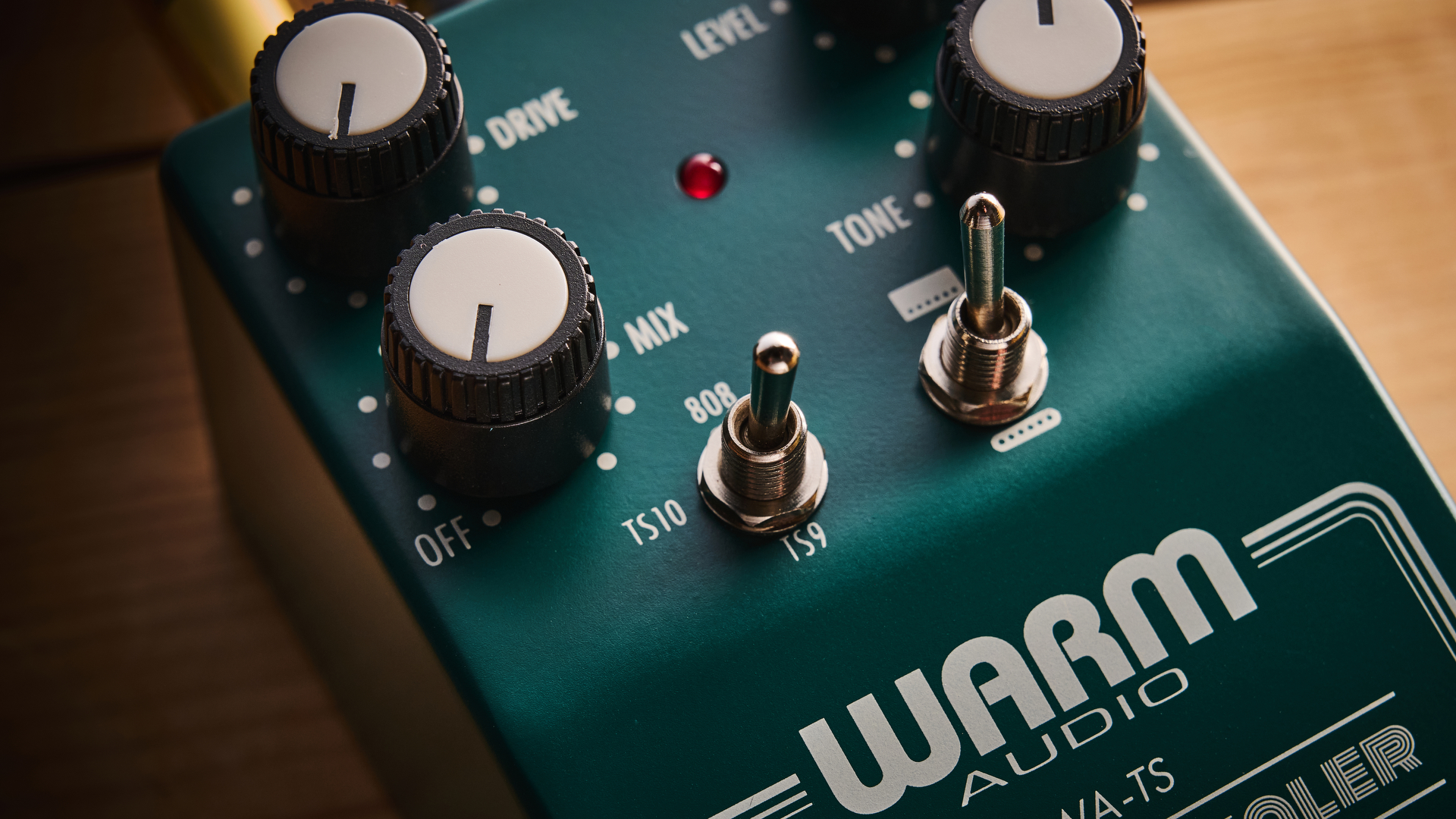
In the case of the Tube Squealer, the name is probably a little on the nose, but a quick gander at the front panel will reveal the aforementioned additions to the TS recipe, with a few functions beyond that of the classic pedal it takes inspiration from that could be central to its potential appeal for players.
There sits a Mix control to bring in some of the dry signal, and two mini switches - one to change between three iterations of the Tube Screamer and another to tailor the pedal to suit single coils or humbuckers.
Around the back, you will find options to select either true or buffered bypass, and a further slider switch that activates an internal voltage booster to take your 9V input up to a headroom-increasing 18V.
So, just another TS clone, or is this something more?. The answer depends on the usefulness of those extra functions, so let’s get it on a ‘board and see what it can do.
Want all the hottest music and gear news, reviews, deals, features and more, direct to your inbox? Sign up here.
Specs

- Launch price: $149|£139|€159
- Type: Analogue overdrive
- Controls: Mix, Drive, Level, Tone, Circuit Selector, Pickup Voicing, Bypass Mode, Voltage Boost
- Features: Three selectable Tube Screamer-inspired circuits, voices for humbuckers or single coils, boost voltage to 18V
- Connectivity: 1/4 inch mono input and output jacks
- Bypass: Selectable, true or buffered
- Power: 9V DC (12mA), 18V (25mA)
- Dimensions: W 5.1” | H 2.75” D 2.63” (129x70x67mm)
- Weight: 13oz/371g
- Contact: Warm Audio
Build quality

Build quality rating: ★★★★½
The price point is between that of Ibanez’s current TS9 and TS808. Reasonable, but enough that I can expect the Warm Audio Tube Squealer to be of a gig-worthy build quality.
Sure enough, a solid metal chassis with a robust feel and a selection of switches and knobs that all have a reassuring resistance when used serve to indicate that it is. A good start.
A criticism often levelled at certain models of the Ibanez TS808 is a fairly dim and difficult to see LED - indeed, my own 40th anniversary TS808 has this issue. While the Tube Squealer’s LED is bright enough that it does not suffer from this to quite the same extent, I would still like it a little brighter, as I can foresee certain lighting conditions where it may get a little lost. Playing during a bright day or with some fun but over-zealous stage lighting, for example.
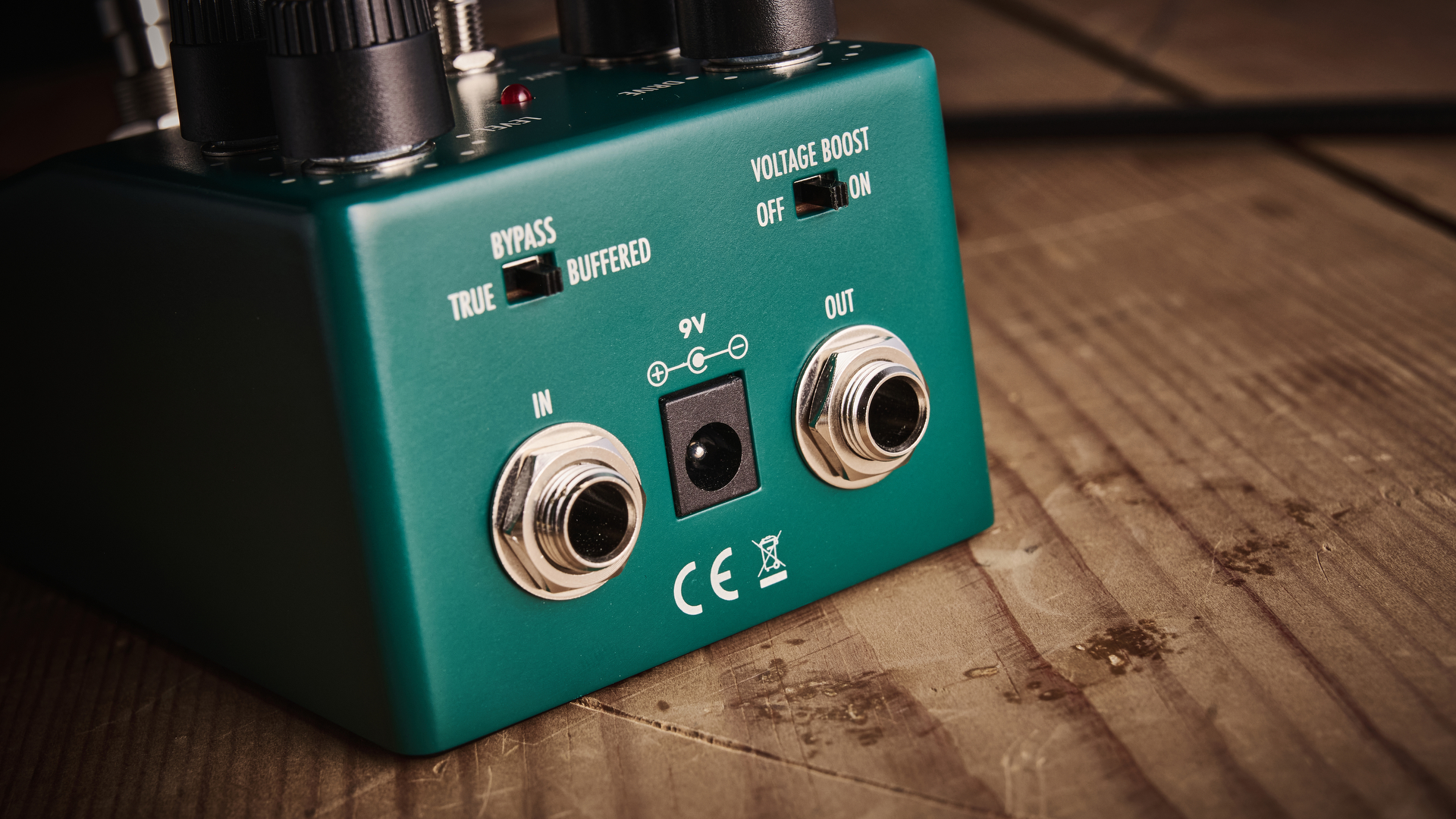
Aesthetically, it’s quite plain but true to the TS808 side of its inspiration, and I can’t help but like this understated look. In my opinion, it lends the pedal a bit of class with a simple, no-frills finish. Here, the green hue chosen for the Squealer is a slightly darker shade compared to Ibanez’s usual finish, and indeed that of many TS-inspired offerings from other brands.
Usability
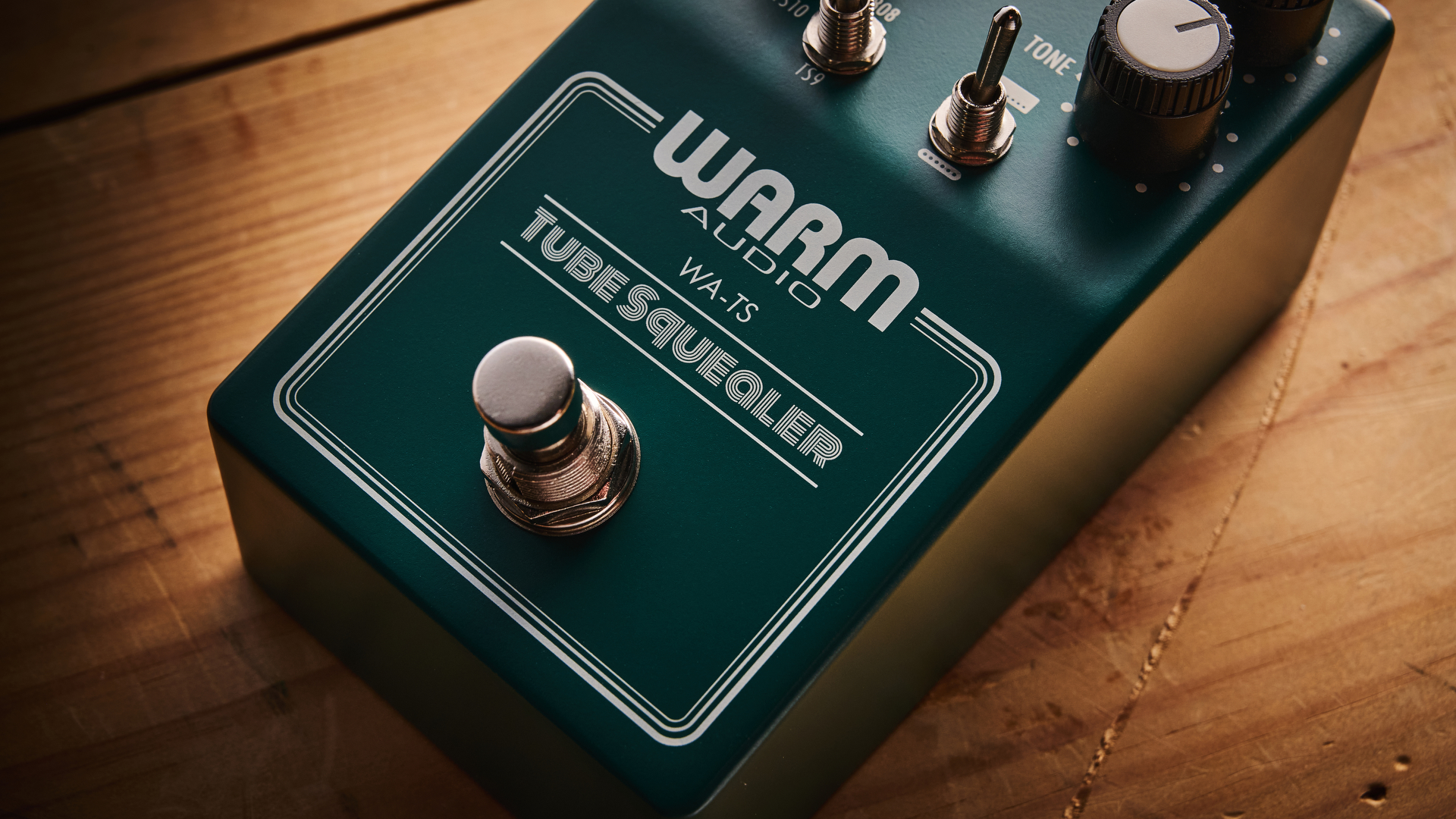
Usability rating: ★★★★½
The Mix control caught me off guard a little
Getting the pedal plugged in and figuring out its use is a fairly simple affair. Firstly, I’m glad to see the usual 5.5mm barrel plug, as some TS-type pedals use the 3.5mm style, which is always a little annoying to have to account for.
The controls on the front consist of Drive, Level, Mix and Tone. Each of the plastic knobs is slightly knurled at the top, giving some extra grip and preventing any slipping when turning the knobs, in addition to providing a nice, tactile feel. The Drive, Level and Tone (treble level) are familiar, but the Mix control caught me off guard a little.
Rather than setting how much of the affected signal is in the mix, this control instead defines how much of the dry signal (a version of the audio unaffected by the pedal) is in the mix. With the control at full, the pedal is as good as off - the opposite of how most Mix controls work in my experience.

On the plus side, the Mix control has a useful notch to let you know when the dry signal is completely dialled out. A dry signal underneath a driven tone at a time when it’s not wanted is often problematic, so it’s handy to have this extra reassurance.
On the left side sits the Mode switch, changing between options inspired by the three cornerstone models of the Tube Screamer
Staying on the front of the pedal, the two mini switches are a simple way of changing between settings, as each change is indicated clearly by associated labels or graphics.
On the left side sits the Mode switch, changing between options inspired by the three cornerstone models of the Tube Screamer - with the TS808 at the top position, TS10 at the middle and TS9 at the bottom.
The 808 was the original Screamer released in the late ‘70s, with the TS9 then TS10 following in the ‘80s. With this in mind, I can’t help but feel a little perplexed that the modes don’t run chronologically from 808, to TS9, then TS10.
The second switch adjusts the midrange to suit a humbucker when up and a single-coil pickup when down, with a helpful picture of each pickup style to indicate which mode you are in. Easy.
Moving on to the back of the pedal, the switches to adjust the voltage boost and bypass type are equally easy to understand (more about these later), with a simple slider to toggle between the two settings on each switch. All in all, a fairly straightforward affair. The nuances come in the sounds…
Sounds
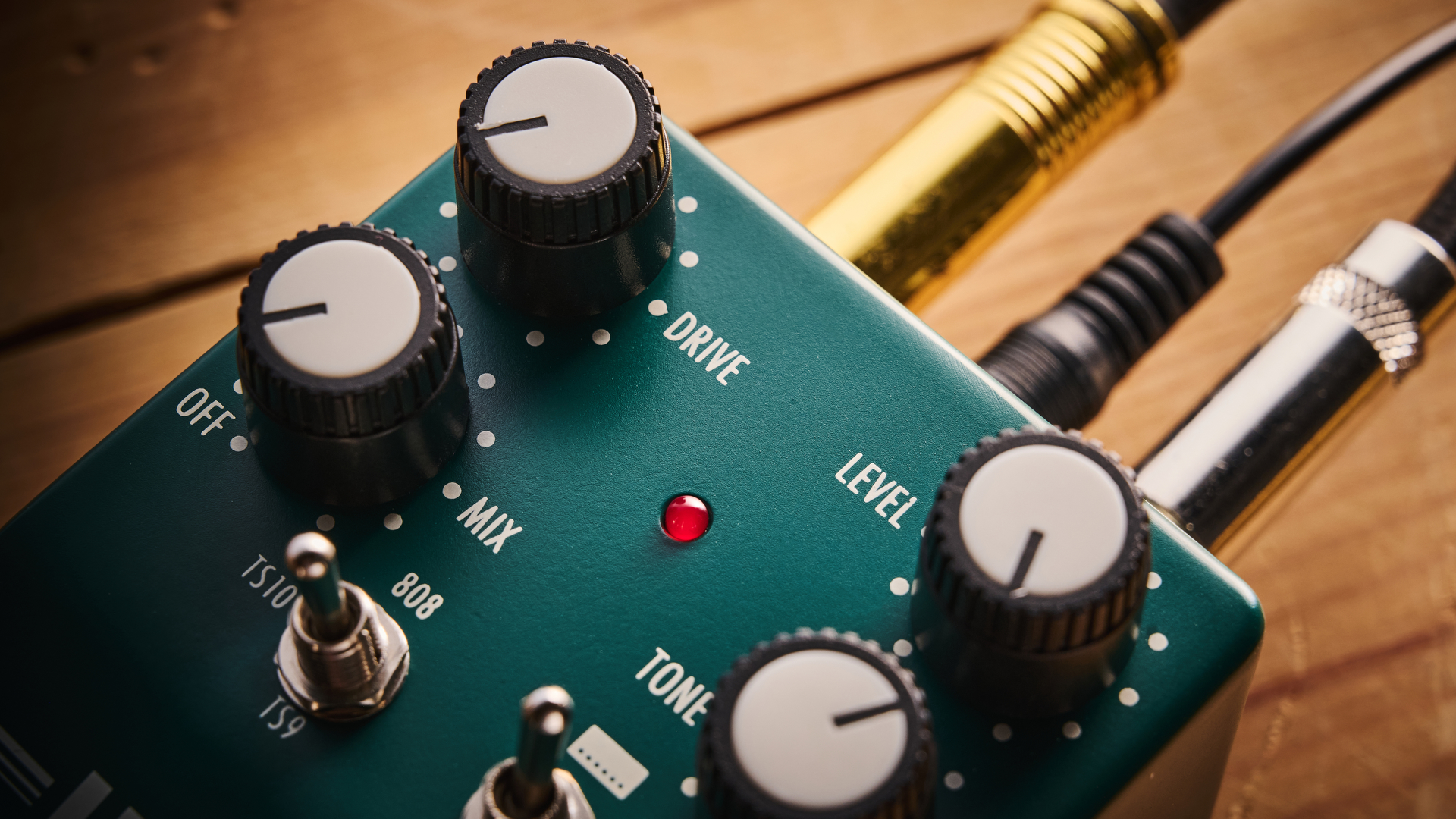
Sounds rating: ★★★★½
Warm Audio says that each mode is a “faithful recreation of three screaming overdrives with added rig-ready features”. So, the first thing to do is test how faithful this recreation really is.
Armed with a Fender Stratocaster and a Victory The Duchess Deluxe MKII valve combo, I hook up the Tube Squealer in its 808 mode alongside my own 40th Anniversary Ibanez TS808 to see how close it gets.
Both pedals have an identical mid-hump with a low and high-end roll off, boosting frequencies around the 700Hz mark. Dialling in some drive, they each max out at bluesy crunch territory with an overdriven sound of a darker flavour, and that trademark, compressed TS feel.
The only discernible difference is that the tone control on the Warm Audio Tube Squealer seems to be set in a sweep slightly higher up in frequency. In other words, it doesn’t get quite as dark as the 808 when rolled off, but gets a little brighter with the tone turned full. It’s a subtle difference, perhaps indicative of the sort of tolerances expected within analogue components.

Moving on to the TS9 and TS10 modes, the changes are subtle, but this is a good thing, as so are the differences between the original pedals that these modes are based on.
With the Squealer set to the TS9 mode, the tone is a tad brighter, and the TS10, to my ears, is closer in tone to the 808 but with a little more gain
Tweaks to the originals include things like the IC chips and output section, not only from one model of Screamer to the next, but also across the same models over time. However, the resulting sound of the TS808, TS9 and TS10 has always been very similar, as proven by many an online shootout.
With the Squealer set to the TS9 mode, the tone is a tad brighter, and the TS10, to my ears, is closer in tone to the 808 but with a little more gain.
It must be tempting to exaggerate these differences when recreating the pedals to drive home the point that there are different modes here. The fact that this is not the case lends credence to Warm Audio's claim that the sounds are faithful recreations from the Tube Screamer line-up.
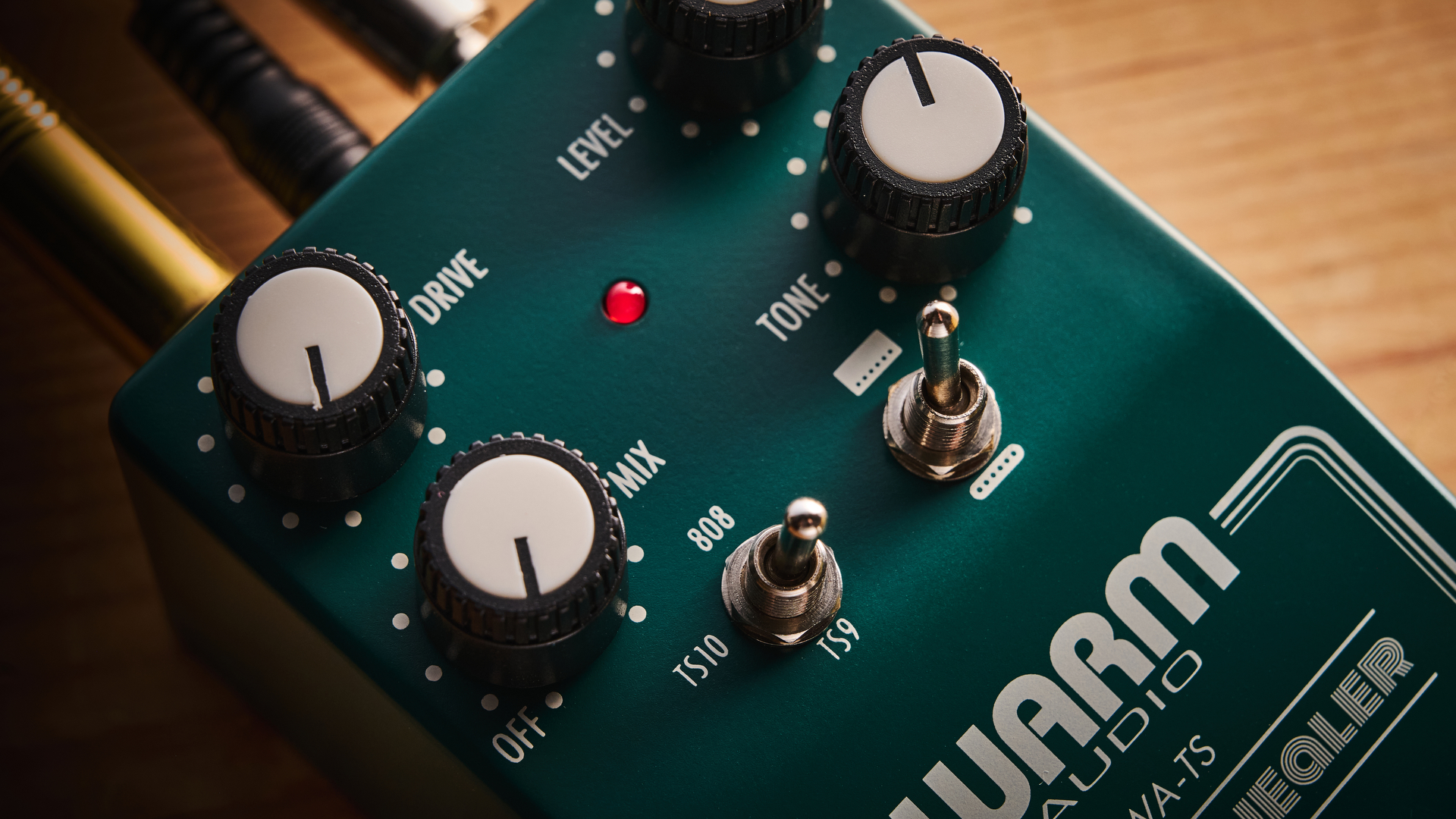
Next, it’s time to get into the extra features the Tube Squealer offers – beginning with the switch that adjusts the pedal’s voice to suit humbuckers.
Personally, I tend to prefer single-coil pickups when using a TS-style pedal. This is because I find that the smooth, compressed nature of a Tube Screamer nicely complements the snappy transient and high-end bite of a single coil.
Humbuckers, with what can be generalised as a darker and more compressed sound in comparison, are sometimes better served with a tone that is a little brighter to prevent things from getting too dark and compressed.
Warm Audio says that the Pickup Voicing switch on the Tube Squealer is designed to “change the mid-range emphasis to suit humbuckers”. From that, I’m expecting the mid-range to shift to a higher frequency.
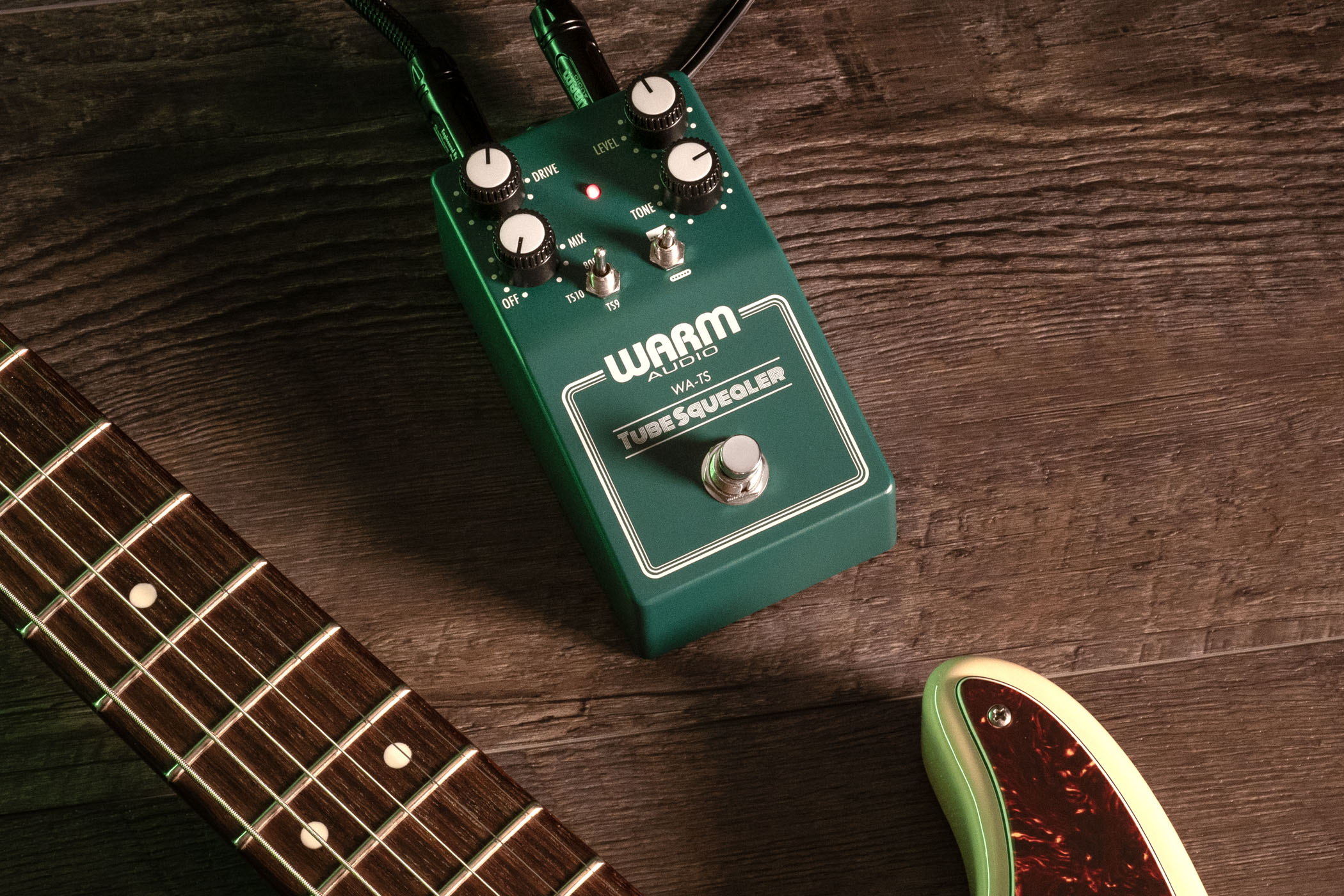
I find the humbucker setting on the Tube Squealer to be useful in pushing the amp into a super tight, heavy rhythm, or a saturated, sustain-soaked lead
With my Les Paul Classic in hand and again running into the Victory Duchess MKII, I engage the humbucker voice and find things have perhaps gone a little too far. The midrange hump has shifted up the range to around 2Khz, but is a little piercing and very much removed from the silky feeling that this type of pedal is known for. To my ears, it makes for quite an uncomfortable sound, particularly at volume.
Where it does start to make sense, however, is when used to push a driving amp into heavy distortion. Loading up an overdriven JCM800 tone model on my Tonex Pedal and amplifying through a Tonex Cab, I find the humbucker setting on the Tube Squealer to be useful in pushing the amp into a super tight, heavy rhythm, or a saturated, sustain-soaked lead. The higher frequency of mid-hump adds clarity to the distortion, lending definition to the chord details and picking articulation.
To be clear, the single-coil setting still does a good job with the Les Paul. The traditional Tube Screamer sound has been used by the likes of Kirk Hammett to boost heavily driven amps for decades, so that is no surprise. What the humbucker option on the Tube Squealer offers is a way to add that extra clarity, if you want it.
Just to see what happens, I plug my Strat back in and select the humbucker setting on the Squealer to find that, although very usable, the extra bite provided is not really needed on a set of snappy single-coil pickups with that extra high-end presence. Therefore, in the realm of boosting a distorted amplifier, the switch does as it suggests.
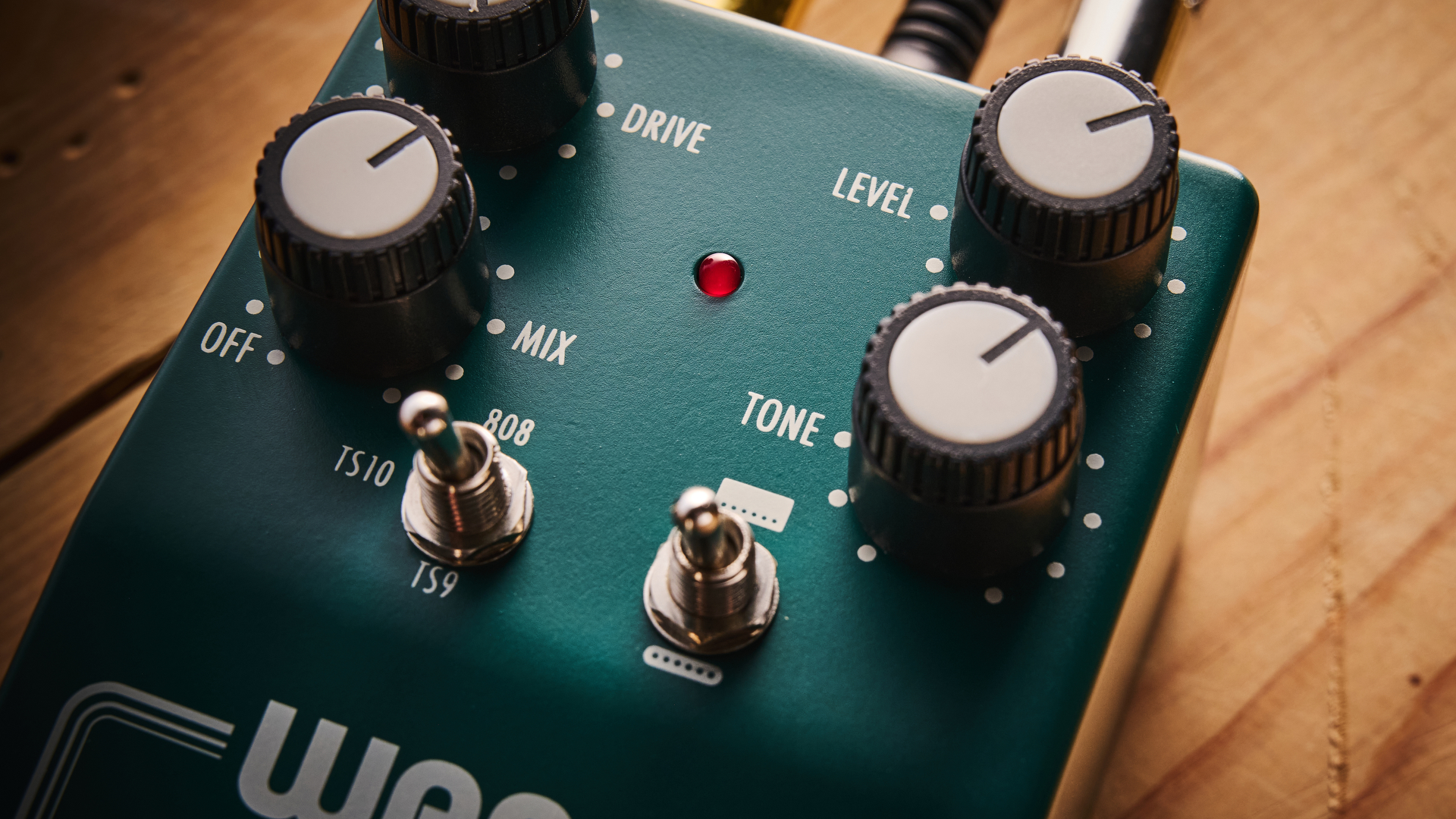
The Mix function of the Tube Squealer is doing something different to the original circuit by blending in the complete dry signal
Moving on to the Mix control, it’s often said that the Tube Screamer circuit mixes the dry with the overdriven signal, but this isn’t quite the case. What’s really going on is that not all of the frequencies are distorted equally, as those below the 720Hz mark clip less and less as you get lower down the frequency range. Giving the impression, in some circumstances, of a clean signal underneath the driven one.
The Mix function of the Tube Squealer, then, is doing something different to the original circuit by blending in the complete dry signal. Going into the JCM800 model results in it receiving less of a boost from the pedal, and the lift in the mids diminishing slightly.
This means the tone is less driven and more full-range, with the extent of the difference being controlled by the Mix knob. A handy tool for a bit of sonic sculpting, allowing me to dial back the TS flavour for songs that are perhaps in need of a more open style of classic rock tone.
Where it is most useful is going into a cleanish amp with the pedal doing a chunk of the drive. Back on the Victory Duchess MKII Valve amp and using the master control to get breakup without the level being too ridiculous (ok, it was a little ridiculous but I’m having fun here!), mixing in the dry signal means extra note definition.
This allows those chord extensions to pop whilst still maintaining the comforting compressed feel that the Tube Squealer offers. Having played Mr Brightside way too many times at countless weddings, it’s that type of stretchy, atypical chord voicing that my mind jumps to for this.
Speaking of compression, perhaps you want less of it? A fairly common criticism of the Tube Screamer, the Squealer addresses this through the Voltage Boost switch at the back of the pedal. Switching it in will lift the voltage to 18V, increasing the available headroom.
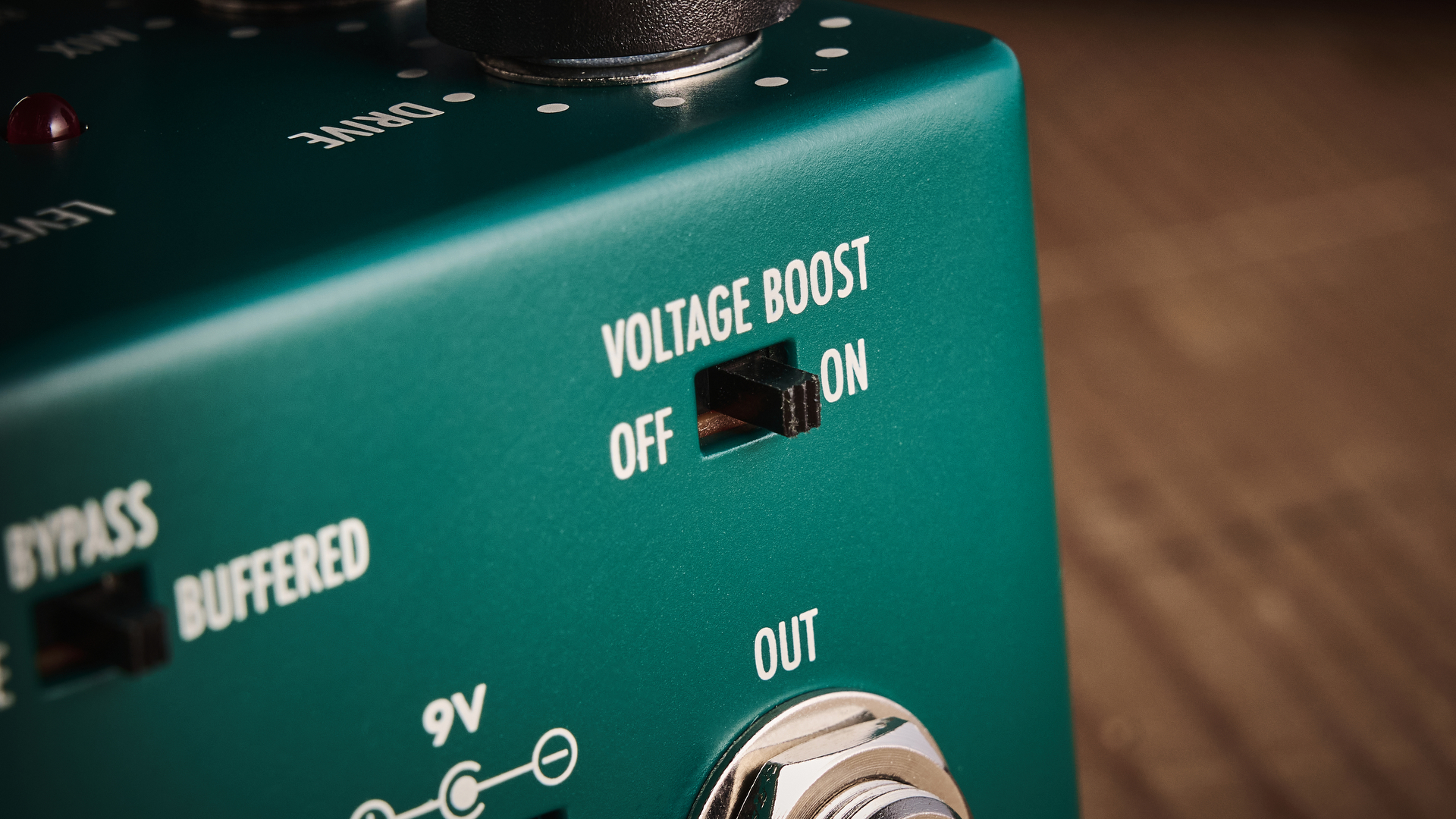
This results in less compression, and is a feel I particularly enjoy. It makes the pedal a bit harder to play, but much more responsive to picking dynamic meaning I immediately feel more connected to the sound. Completely subjective, of course, but no matter your preference, the conclusion here is that this function works as expected.
The last addition to cover is the True/Buffered Bypass selector. A pedalboard full of True Bypass pedals could benefit from a buffer to stop signal degradation, in which case, slide that buffer on. A board with lots of buffered bypass pedals can also suffer from signal degradation (because physics), at which point, as you may have guessed, stick it in True Bypass mode. Not the most exciting feature, but one that will please any tone hound looking to preserve the detail in their carefully considered sound.
Verdict

So, do the extra features in the Tube Squealer do enough to make the pedal worth noting in a world already full of Tube Screamer-inspired circuits? In short, yes.
The caveat to this is that the real thing is widely available and reasonably priced. Therefore, if you're after the tried and tested Tube Screamer sound and nothing more, you may as well pick up one of the originals.
If, however, what is needed is the TS sound but with a few tweaks, then that’s where the market gets interesting, as there is an extensive selection of Tube Screamer-style pedals available.
For example, the JHS Bonsai boasts nine different iterations of the Tube Screamer within one pedal, and the Origin Effects Halcyon Green Overdrive sports a Dry mix and some clever features, including adaptive gain staging and a mod that shifts the mid hump into brighter territory.
Making a choice is going to come down to the features that you need. What the Warm Audio Tube Squealer provides is a recreation of a classic pedal that plays extra well with others due to its true/buffered bypass selector, is capable of making sophisticated chord extensions pop with a Mix control, can add extra clarity to distorted tones via the humbucker switch, and allows for extra headroom courtesy of the Voltage Booster.
If that list of features is a good fit for your rig, then the Warm Audio Tube Squealer may be the ideal way to fill that Tube Screamer-shaped hole on your board.
MusicRadar verdict: The Warm Audio Tube Squealer offers a range of extras that are useful enough to justify its entry into what is a saturated market. Featuring a Voltage Booster, Mix control, True/Buffered bypass selector and a switch to shape the tone for humbuckers or single coils, if these extras suit your set-up, you may have just found your perfect iteration of a classic circuit.
Test | Results | Score |
|---|---|---|
Build quality | A build that will happily deal with the rigours of gigging life. | ★★★★½ |
Usability | Mostly straightforward, with the exception of the mix control. | ★★★★½ |
Sounds | Accurate Tube Screamer recreations, with useful extras. | ★★★★½ |
Overall | A great option for those after a selection of Tube Screamer sounds with some helpful, gig ready additions. | ★★★★½ |
Also try
Way Huge Green Rhino $159|£169|€182
The Green Rhino gives out the Screamer-esque sound you would expect, but with two mini knobs for some extra tweaking. One to boost or cut either the 500Hz or 100Hz range, and the other to control the highs. A slightly different way of presenting the user with extra control over the Tube Screamer sound.
Mooer Green Mile £49|€59
On a budget? Mooer has you covered with its version of a TS-style circuit. As well as doing the classic mid hump screamer sound, it also features a mode to add a bit of extra crunch to the traditional tone.
JHS Bonsai $249|£219|€263
With so many subtly different iterations of the Tube Screamer available, how do you choose the one that best suits you? JHS’s solution - don’t. The Bonsai sports eight versions of the Tube Screamer for you to play with, as well as a JHS-modded version and a Keeley-modded version, adding up to nine modes in total.
Read more: Contemporary Tube Screamer-style pedals
Hands-on videos
Warm Audio
Kris Barocsi
In The Blues

Pete cut his teeth as a guitarist by spending over a decade playing in both function and original bands whilst teaching during the week. He now uses this experience combined with degrees in Music and Web Design, plus a general addiction to all things guitar gear, to write reviews for MusicRadar and Guitar World. When not experimenting with his pedalboard, he will spend any extra time he has perfecting his extensive coffee-making setup.
You must confirm your public display name before commenting
Please logout and then login again, you will then be prompted to enter your display name.

